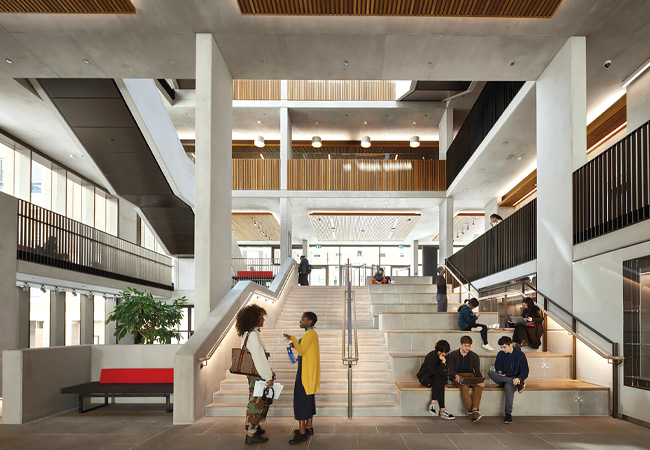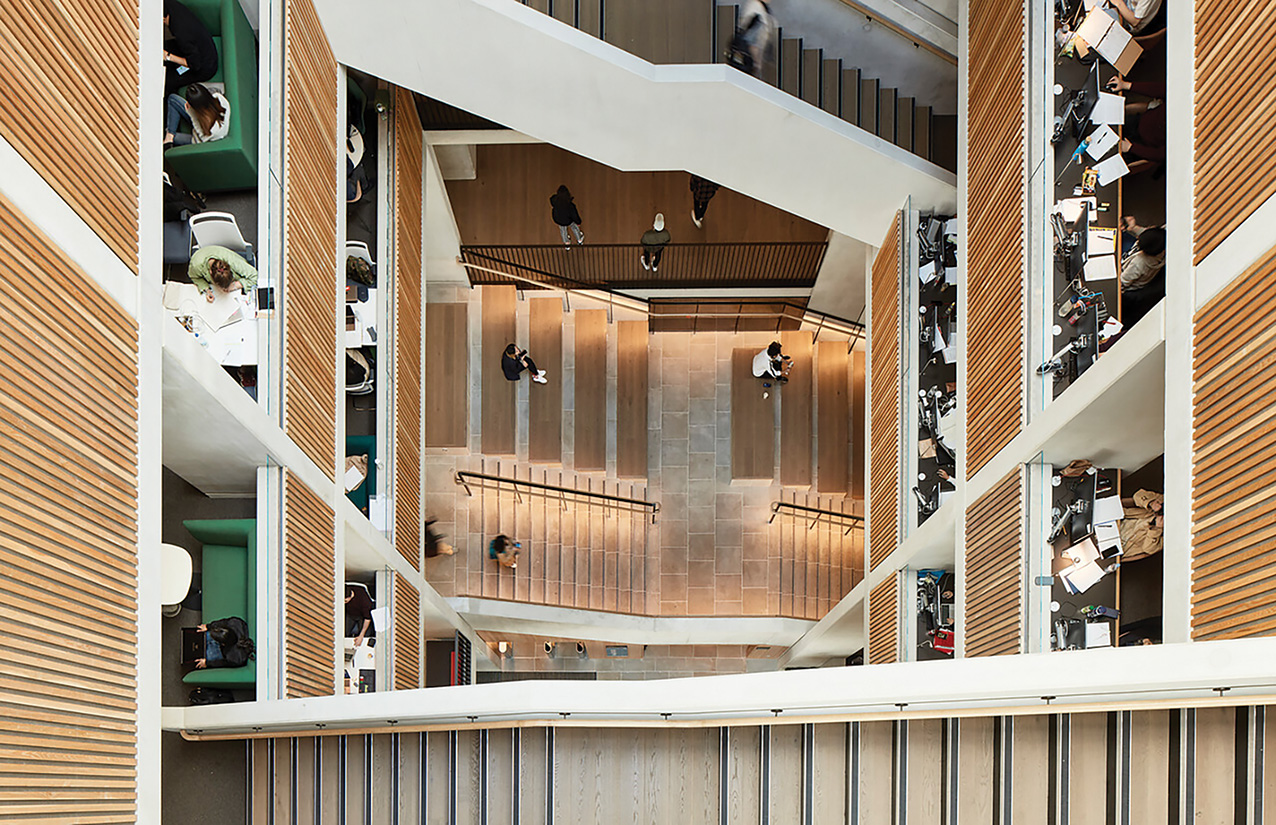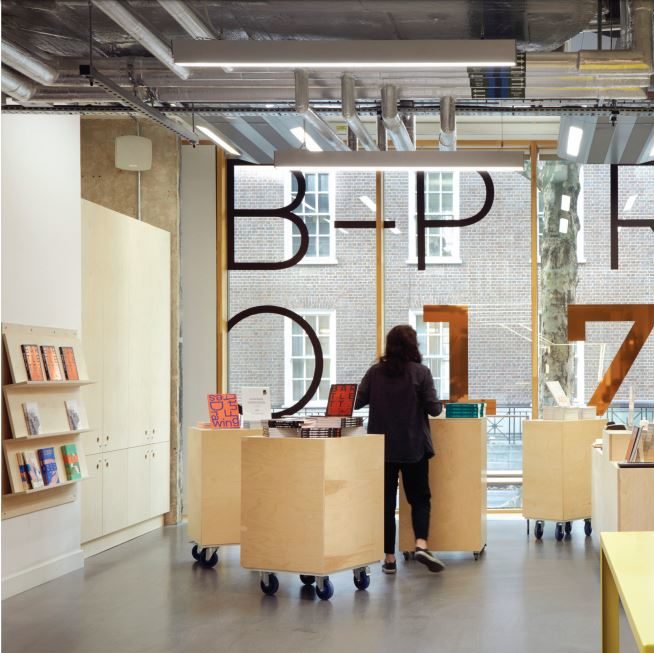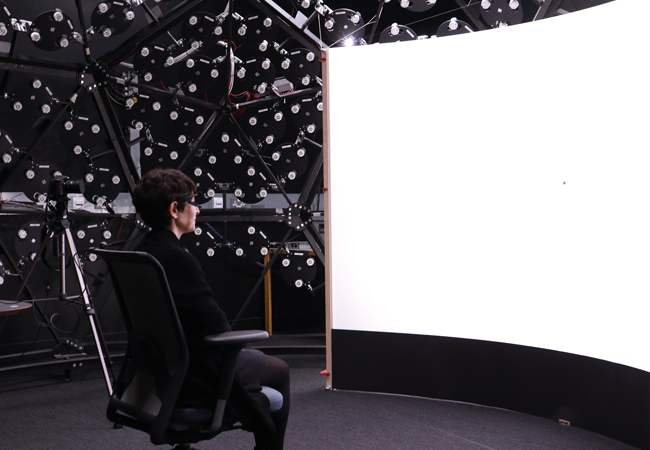
The PPR guidelines capture lessons learned from all UCL projects – no matter how big or small – in a formal process

Hailed by the 2021 CIBSE Building Performance Awards judges as a ‘client-led, collaborative process with clear impact and tangible outcomes’, Buro Happold and University College London’s Post-Project Review (PPR) Guidelines were the clear winner of this year’s Learning and Development Award. The expert-industry judging panel was impressed by what it considered to be a well thought through approach to post-occupancy evaluation (POE), as well as the standardisation and clear application of a difficult process that it agreed ‘is often hard to implement effectively’.
The PPR Guidelines were developed as part of a collaboration between UCL, Buro Happold, and consultants Alexi Marmot Associates. Since 2014, UCL has been engaged in a 10-year, £1.25bn ‘Transforming UCL’ programme that, up to the end of last year, had completed 182 projects. One of these was the award-winning 22 Gordon Street refurbishment of its Bartlett School of Architecture – led by Buro Happold and Hawkins\Brown architects – which was named CIBSE Retrofit Project of the Year in 2020. Buro Happold was already engaged in a POE of this project when the UCL Estates team commissioned it to develop PPR Guidelines that could be applied to all projects involving the college’s estate.

David Stevens, director of transformation at UCL Estates, was assistant director projects mobilisation at the time, and was working with senior sustainability manager Ben Stubbs on ensuring the estates buildings were performing as efficiently and sustainably as possible. ‘We had been discussing executing this for some time, but it’s only when we created UCL’s mobilisation and transition team that we were empowered to create these guidelines – and it coincided with Buro Happold already being employed to do a POE on 22 Gordon Street. So it knitted together nicely,’ says Stevens.
‘Ben, I and our other stakeholders sat down with them at various stages and made it clear what we were looking for – specific things that we wanted them to include – and they constructed it and delivered that to us.’
UCL now has a dedicated database of lessons learned, which are captured at every project stage, from inception to completion
The aims of the PPR guidelines are to ensure UCL’s buildings perform as intended, reduce the ‘performance gap’, and document lessons learned from all projects undertaken by the estates team – no matter how small – in a formal process, so they can be applied to future projects.
The process includes a project implementation review (PIR), to evaluate how effectively the conceptualisation and delivery is carried out. For projects that are valued at more than £10m or business critical, a full POE is automatically initiated. Crucially, lessons learned are held in a central database and made available to all designers involved in UCL estates projects.
‘Our dedicated mobilisation and transition team sits between our estates development and our estates operations teams,’ explains Stevens. ‘It facilitates that sharing of information and knowledge, creating standards and standardisation, and taking the lessons learned, following them through into operation, then feeding them back into the design process. On top of that, we have a huge number of external providers and internal project managers – both on the capital side and the maintenance side – who all use and feed into those systems for every project.’

The PPR guidelines were designed to address a number of challenges spanning project inception, delivery and handover – such as outputs from close-out meetings not being standardised or adequately shared beyond the immediate project team, and input from other stakeholders (such as FM teams and end users) not being included in the resulting learning from projects.
Stubbs adds: ‘It’s that age-old problem with the performance gap. In terms of sustainability, we plan and design buildings to be highly energy efficient, performing better than Building Regulations, aiming for Breeam Excellent or Outstanding awards – but, sometimes, that intent doesn’t actually carry through. It’s a great frustration when those good intentions aren’t realised. So, it’s been great to have an opportunity to address that properly; to get past the handover stage and make sure we do the fine-tuning, get everything working as it should, and make sure the lessons are learned for future projects.’
Refining the guidelines
The development of the guidelines happened relatively quickly, says Stevens, with Buro Happold refining them in parallel with the live POE on 22 Gordon Street. The team then focused on ensuring consistency of delivery, working with external providers, consultants and internal staff to get feedback and refine the guidelines. At the time of writing, there have been eight iterations of the PPR – the most recent in August 2020 – as they have been further refined and adapted to meet new regulatory requirements and guidance.
Key stats: ‘Transforming UCL’ Programme (2014-20)
- £1.25bn investment in UCL’s estate
- 182 ‘Transforming UCL’ projects completed
- 97 major projects completed
- 22 projects recognised with sustainability awards
- 180 laboratories refurbished or created
- 168,776m2 space refurbished or created
- 92 teaching spaces refurbished or created
The PPR guidelines are prescriptive in terms of minimum requirements, to help standardise the process, but they are also designed to be implemented across a variety of building typologies and applied to a full range of UCL’s projects, and demand an appropriate level of detail depending on the scale and implications of the project. That way, the real issues surrounding a project can be captured, without the process overburdening those involved and becoming a ‘box-ticking’ exercise.
‘It applies to every project, but there is a lot of nuance within that,’ explains Stubbs. ‘A project based around, say, mechanical life-cycle replacement is very different from a new-build construction project, or the delivery of a teaching space or a containment level-3 laboratory. So, it is scaled in a way to address that, so that it remains relevant.’
A relatively minor project – of up to £25,000, for instance – may require a Survey Monkey questionnaire, with other smaller projects needing a slightly different questionnaire sent to relevant people involved in it. Larger projects require more detailed PIR feedback and/or POE processes, Stevens explains – but that also depends on a range of other factors. ‘It’s based upon finance, complexity, criticality, and risk and impact,’ he says. ‘So, a low-cost, £25,000 project with higher risk criticality in its performance – such as in a research-lab environment – would require a much higher level of PPR. The guidelines describe how it should happen, but it requires a conversation between the project manager, the assistant director that looks after mobilisation, and the head of built environment sustainability, where we agree what level of post-project review should happen on each project.’
Lessons learned database
Through the adoption of the PPR guidelines, UCL now has a database of lessons learned – which are captured at every stage of the project, from inception (RIBA Stage 0) through to completion, post-occupancy review and in use (RIBA Stage 7) – and it is available to all framework consultants and contractors.
The UCL project mobilisation and transitions team has one staff member who maintains the lessons learned database, which can be searched by contractor, consultant, RIBA stage, building, project type, and so on. ‘Every time we do a POE or a PPR, all those lessons learned and action points get uploaded onto the database – and we have a requirement in our stage gates and governance procedures that our contractors and consultants must view these at the relevant stages,’ says Stevens. ‘It’s ensuring the lessons learned processes are built in.
‘In addition, the mobilisation and transition team checks and ensures seasonal commissioning is taking place after handover, because that’s one area of performance on which organisations or contractors can often fall down. That, in itself, has had a massive impact on reducing the performance gap at UCL.’
The aim of the PPR guidelines was to ensure lessons learned from all projects undertaken were documented in a formal process, so learning could be applied to future projects
Mark Dowson, associate director in the sustainability team at Buro Happold, led for the firm on the PPR guidelines project, and says UCL’s use of a dedicated team and person responsible for the ‘lessons learned’ database is an innovative step from which others in the sector would benefit.
‘Capturing lessons learned shouldn’t be a new thing. It is often part of the process evaluation stage of the POE, but those lessons learned don’t always get passed on in a systematic, formalised way,’ he says. ‘And it’s quite rare for outcomes of those sessions to be centrally related, and for someone within the organisation to be responsible for looking after that database to ensure insights are incorporated into future projects.
‘It’s innovative from UCL, and the right approach that people within the organisation, and the client championing it, are looking after the lessons.’
Through these new processes, UCL is seeing a continued reduction in defects and uncompleted work at handover, seasonal commissioning being documented and diarised consistently, and a culture of holistic POEs – assessing functional, technical and process evaluation criteria in line with – and exceeding the requirements of – Breeam and the Higher Education Funding Council for England.
Getting the data from POEs is one issue, but another challenge is ensuring this is used effectively. ‘When we get the feedback from this process, particularly when we’ve done some of the bigger POEs, we have a wealth of data and information on the actual performance of the building,’ Stubbs says. ‘We can pinpoint – particularly in terms of the services – exactly where things are operating inefficiently and going wrong. There are challenges; we have to ensure we have the skills to evaluate this data, and to assess whether or how issues identified can be addressed. But there is a real opportunity for improving the efficiency around building performance.’
Stubbs says the process also addresses a challenge that he experiences constantly – trying to get good, early engagement on sustainability. ‘Sometimes, sustainability is left too late in the design process, and the more radical solutions that we might have wanted to look at aren’t necessarily there any more. So, UCL has developed a Sustainable Building Standard, which refers directly back to this whole process. It ensures that what we learn projects, so any issues can be addressed in future.’
Sharing knowledge
For the UCL team, sharing the learning it has gained from introducing the PPR is critical. The guidelines and their outcomes have been shared across the higher education (HE), sustainability, and facilities management sectors, says Stevens, who adds: ‘We have presented at Constructing Excellence events, and shared them with the BSRIA Soft Landings Conference and Soft Landings Network events, so anybody can benefit from what we do. We’ve also met with counterparts in other HE sectors and talked them through what we do, as well as learning from what they do.
‘Our PPR guidelines are part of our wider “mobilisation transition and soft landings” procedures – they’re a component of a much bigger picture in relation to how we design, transition and operate our buildings.’
22 Gordon Street Bartlett School of Architecture refurbishment The first UCL project to fully complete both a PIR and POE was 22 Gordon Street, the £22m refurbishment and extension to UCL’s Bartlett School of Architecture. The POE included: a review of energy performance covering all main and sub-meters; two BUS user surveys; interviews with users and FM staff; and supervision of two MSc students from the Bartlett undertaking detailed investigations of air quality and thermal comfort. In terms of operational energy, a 60% reduction in energy use per m2 was demonstrated, equivalent to a 33% reduction in absolute energy use. This was despite floor area increasing from 5,260m2 to 8,887m2 and greater environmental control being provided in many spaces throughout the building. A key success was that the architect was novated to the design-and-build contractor during the construction stage; this safeguarded quality and enabled efficient knowledge sharing. Broader lessons included a better understanding of what worked well (for example, design, MEP strategy when fully operational) and what could be improved (soft landings around the commissioning process). Wilkins Terrace and Lower Refectory refurbishment Located at the heart of the UCL Bloomsbury Campus, this £27m project included the refurbishment and extension of the main refectory in the undercroft of the Grade I-listed Wilkins Building. Sustainability was a key consideration in the planning and development of the project, and the refectory achieved a rating of Breeam ‘Very Good’. The project has helped to reduce UCL’s impact and operational costs, with much-improved energy performance and monitoring. Major improvements to building fabric and the efficiency of heating and cooling systems help reduce energy consumption and improve occupant comfort. Better energy management capabilities allow UCL to monitor and manage consumption in much greater detail, highlighting energy-hungry areas and activities, as well as opportunities for ongoing efficiencies. Indoor air quality has also been optimised through careful selection of paints, varnishes, timber-based products and furniture. Key lessons learned:Case studies

